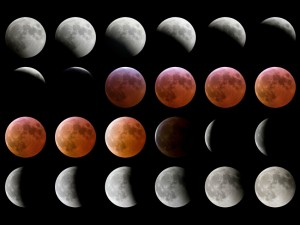The full moon will enter the shadow of the Earth on the evening of Monday December 20 into Tuesday December 21 leading to a total lunar eclipse.
Centuries ago, such an event was thought to be caused by a dragon eating the moon.
The eclipse begins at 1:33am, which is the partial phase. The moon then slowly enters the shadow and is completely engulfed at 2:41am and stays in the shadow till 3:53am.
“You do not need anything special to see the eclipse, which is visible even if you are surrounded by lights,” according to Irving Robbins, Director of the Astrophysical Observatory at the College of Staten Island. He adds that “the weather looks like it will be cool and skies partly cloudy so the event should be visible. One would have to dress extremely warm to view the full eclipse since temperatures are expected to be below 32 and the CSI Astrophysical Observatory will not be open.”
According to Professor Robbins, an easy way to enjoy a short and impressive viewing is to set the alarm and go outside at approximately 2:25am on Tuesday. This will allow for viewing of the final phases of the full moon entering the shadow.
“It is best to have binoculars to see the full eclipse that starts at 2:41am. When the moon turns from orange to blood red, which scared the hell out of ancient people who would then beat their drums to scare away the dragon,” commented Robbins. He added that “the reddish color is due to sunrise and sunset light entering the shadow at the same time,” and that this event is usually very visible with binoculars in city environments.



![[video] Celebrate Italian Heritage with a benefit concert by the World’s Longest-running Phantom to support Italian Studies at CSI](https://csitoday.com/wp-content/uploads/2014/09/phantom-web.jpg)













